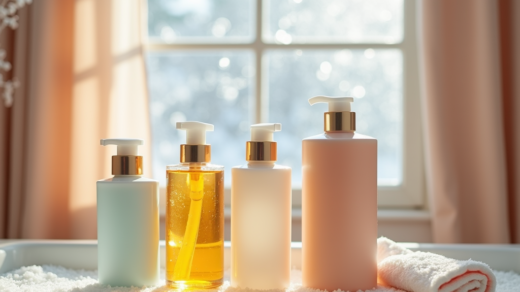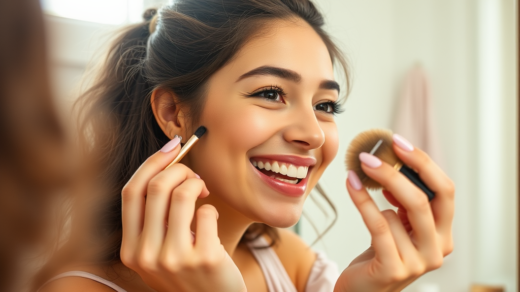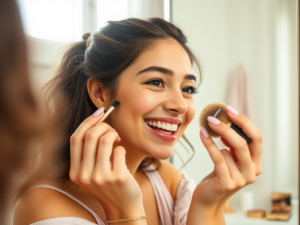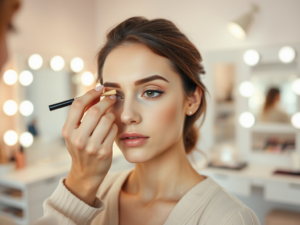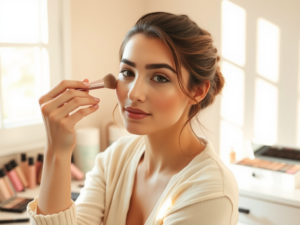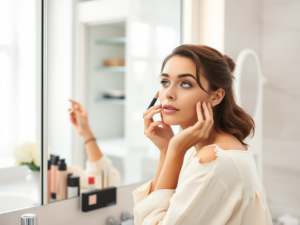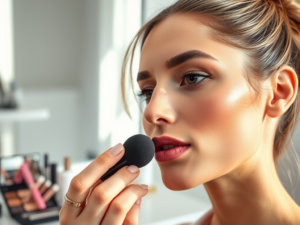The Ultimate Guide to the Korean Skincare Routine
The allure of a radiant complexion is a universal desire, transcending cultural borders. Within the realm of skincare, Korean beauty (often referred to as K-beauty) stands as a paragon of innovation and tradition, skillfully blending time-honored practices with modern advancements. As consumers seek not just cosmetic products but holistic solutions for their skincare concerns, the Korean skincare routine emerges as a beacon of hope. This step-by-step guide demystifies the process, delving into its essential elements while celebrating the science and artistry behind it. Adopting this routine means embracing a philosophy that prioritizes health, glow, and overall skin vitality. Join us on a journey that transforms your skincare experience from mundane to exceptional.
At the heart of the Korean skincare ritual lies an intentional focus on prevention and nourishment. Rather than merely concealing imperfections, it aims to enhance the skin’s natural beauty over time. Easy-to-follow steps guide users through cleansing, hydrating, and protecting their skin. Whether you’re a skincare novice or a seasoned enthusiast, understanding the nuances of each phase unlocks the potential for radiant skin. This guide provides not only practical advice but also insights into unique ingredients that elevate the effectiveness of each step. Discovering what makes K-beauty so influential and cherished can inspire you to tailor a routine that best suits your individual skin needs.
The Six Basic Steps of the Korean Skincare Routine

The essence of the Korean skincare routine lies within its six basic steps, each contributing to an overarching goal: achieving healthy and luminous skin. While it may seem like a lot, incorporating these steps into your daily regimen can feel seamless once you understand their purpose. Here’s a deeper look into each step, including tips on how to make the most of your routine.
Cleansing
Cleansing is the foundation of any effective skincare routine. Adopting a two-step cleansing method is ideal, especially for those wearing makeup or sunscreen. The first phase employs an oil cleanser, which gently breaks down makeup and excessive sebum. Following this, a water-based cleanser works to remove any leftover impurities, ensuring your skin is thoroughly clean. This dual approach not only prepares your skin for the subsequent products but also maintains its natural balance. Remember, the goal is to create a clean canvas that optimizes absorption of the following treatments.
Exfoliation
Exfoliation plays a critical role in maintaining vibrant skin by encouraging cell turnover. Regularly exfoliating allows your skin to shed dead cells, revealing a smoother, brighter complexion underneath. There are two main types to consider: physical exfoliants and chemical exfoliants. Physical exfoliants involve scrubs and brushes to slough off dead skin, while chemical exfoliants use active ingredients like AHAs and BHAs to gently dissolve buildup. For best results, exfoliate 1-2 times a week, depending on your skin type and sensitivity. Here’s a simple list of suitable exfoliants:
- Physical: Sugar scrubs, coffee scrubs, and silicone brushes
- Chemical: Lactic acid, salicylic acid, and glycolic acid
Toner
A toner is often underestimated but plays a vital part in Korean skincare. This product helps restore pH balance after cleansing and prepares your skin for maximum hydration. Toners can be infused with natural ingredients that target specific skin concerns, like acne or dryness. For instance, witch hazel works as an astringent for oily skin, while rose water soothes sensitive skin. Toners also serve to remove any remaining impurities, ensuring your skin is primed for moisture. To choose the right toner, consider what your skin needs most:
- Hydration: Look for alcohol-free options with hyaluronic acid.
- Exfoliation: Choose toners containing glycolic acid.
- Soothing: Find toners with chamomile or green tea extract.
Essence
The essence is a unique feature of the Korean skincare routine, characterized by light hydration and targeted treatment. This product is typically lightweight and absorbs quickly into the skin, providing a surge of moisture and active ingredients. Popular ingredients in essences include fermented extracts, which boast skin-repairing properties, and botanical extracts that offer antioxidant benefits. By applying essence before serums, you enhance the skin’s ability to absorb subsequent products, fostering an optimized result. Many consumers rave about its transformative effects after just a few weeks of use.
Summary of Korean Skincare Steps
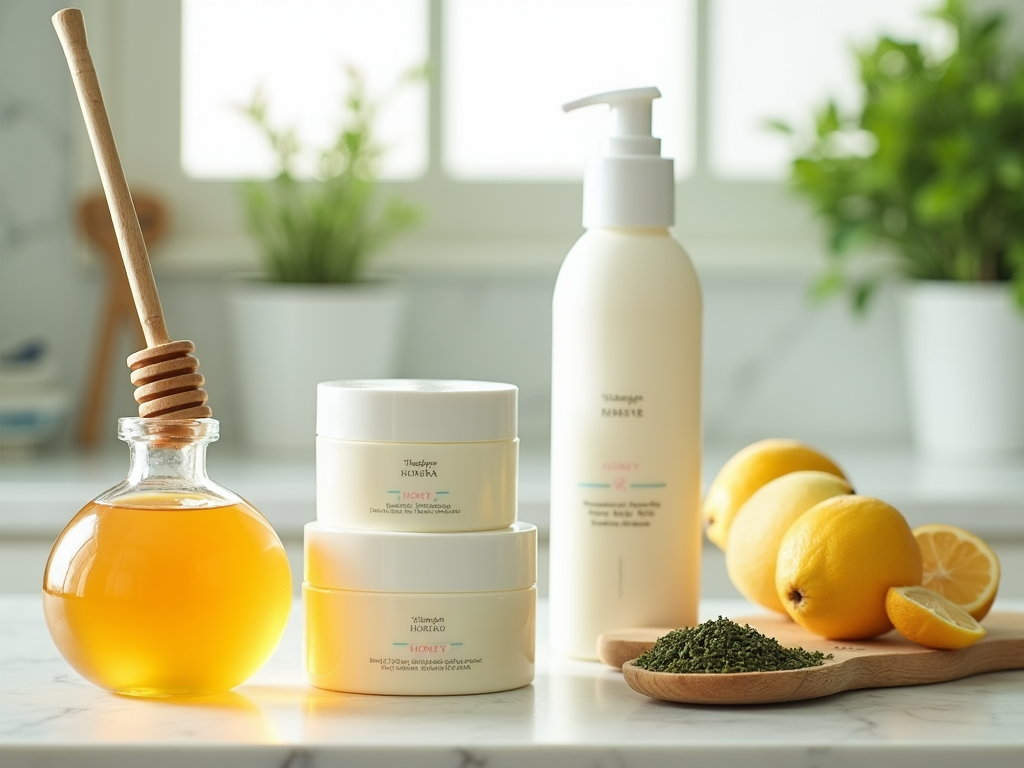
| Step | Purpose | Key Products |
|---|---|---|
| 1. Cleansing | Remove impurities, makeup, and excess oil | Oil cleanser, water cleanser |
| 2. Exfoliation | Promote cell turnover and smooth skin | Scrubs, chemical exfoliants |
| 3. Toner | Balance pH and prep skin for moisture | Alcohol-free toners |
| 4. Essence | Hydrate and target skin concerns | Fermented essences |
| 5. Serum | Target specific skin issues | Vitamin C serum, hyaluronic acid serum |
| 6. Moisturizer | Lock in hydration | Lightweight gel, rich cream |
Understanding Korean Ingredients
Korean skincare products are enriched with a variety of extraordinary ingredients known for their beneficial properties. Understanding these ingredients can significantly enhance your skincare knowledge and decision-making. Some popular ingredients frequently featured in Korean products include:
- Snail Mucin: Famed for its remarkable hydration and healing properties, snail mucin promotes cell regeneration and elasticity.
- Honey: This natural wonder offers not only deep moisture but also has antibacterial benefits, making it suitable for both dry and troubled skin.
- Green Tea: Packed with antioxidants, green tea is beloved for its soothing properties, helping to calm irritated and stressed skin.
Customizing Your Korean Skincare Routine
With a vast range of products available, customizing your Korean skincare routine allows you to tailor it to your unique skin type and concerns. Here are some tips for your specific skin types:
For Oily Skin
Those with oily skin should opt for lightweight, non-comedogenic formulations that won’t clog pores. Incorporating an oil-free moisturizer, gel-based essences, and clay masks may be beneficial. Ingredients like salicylic acid help manage oil production and prevent breakouts. Ensure you do not over-exfoliate, as this can lead to rebound oiliness. Regularly changing pillowcases and towels can also aid in reducing oil-related concerns.
For Dry Skin
If you have dry skin, adding layers of hydration through essence and serum is crucial. Look for products enriched with hydrating agents like hyaluronic acid and glycerin. Additionally, use richer creams that provide a barrier to lock in moisture. Consider opting for sheet masks containing moisturizing ingredients for an added boost. Regular exfoliation gently promotes skin renewal while improving product absorption.
For Combination Skin
Combination skin often requires a more strategic approach. The T-zone may be oily while the cheeks remain dry. Utilizing lightweight formulations in the T-zone, while opting for richer creams on drier areas, can significantly enhance overall skin health. Avoid heavy products that may exacerbate oiliness, and don’t forget the importance of achieving balance. Sample various products to determine which ones work best for your unique skin combination.
Conclusion
The intricate layers of the Korean skincare routine offer a holistic approach to achieving healthy, glowing skin. Each stage, carefully crafted and infused with effective ingredients, plays a vital role in promoting skin vitality and resilience. By embracing each element of this routine, you not only nourish your skin but also cultivate a meaningful self-care practice. Experimenting with different products allows personal exploration of what truly works for your skin. Dive into the realm of K-beauty, and relish the journey of nurturing your skin to achieve that radiant glow we all admire.
Frequently Asked Questions
- What is the 10-step Korean skincare routine? The 10-step routine includes cleansing, exfoliating, toning, applying essences, serums, sheet masks, eye cream, moisturizing, and sunscreen.
- How often should I exfoliate? Exfoliation should be done 1-2 times a week, depending on your skin type and the product used.
- Can I skip steps in the Korean skincare routine? Yes, you can tailor the routine to your preferences and skin needs; however, cleansing and moisturizing are essential.
- What is the best sunscreen for Korean skincare? Look for lightweight, broad-spectrum sunscreens that offer high SPF and feel comfortable on your skin, preferably with a non-greasy finish.
- How long until I see results from a Korean skincare routine? Results may vary, but you can typically see improvements in your skin’s texture and hydration within a few weeks of consistent use.

